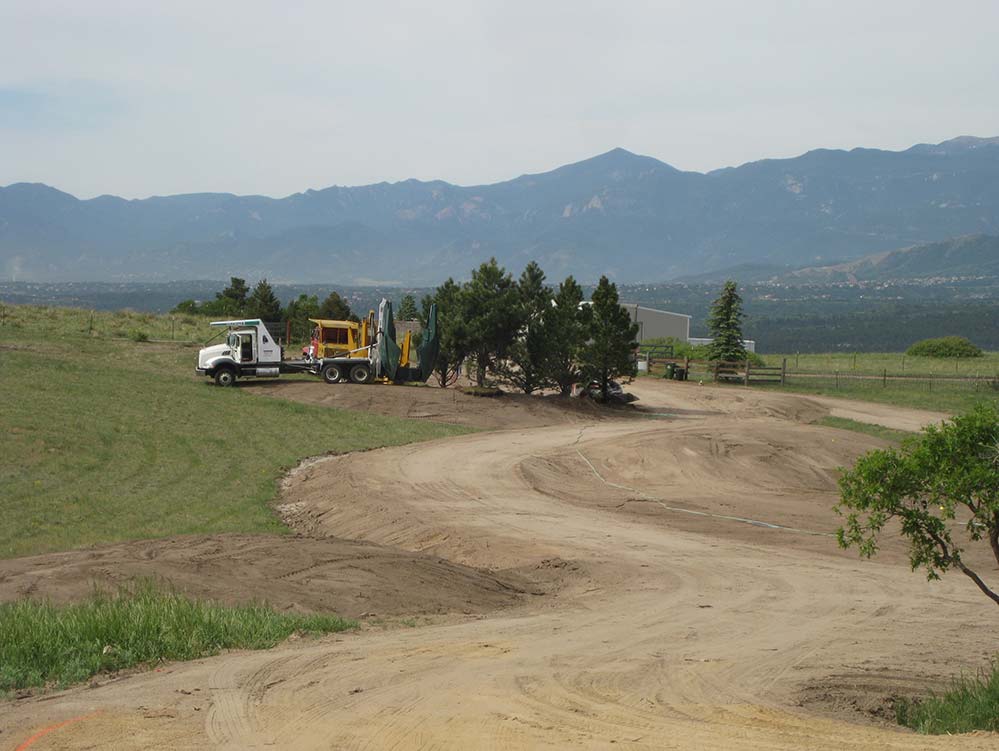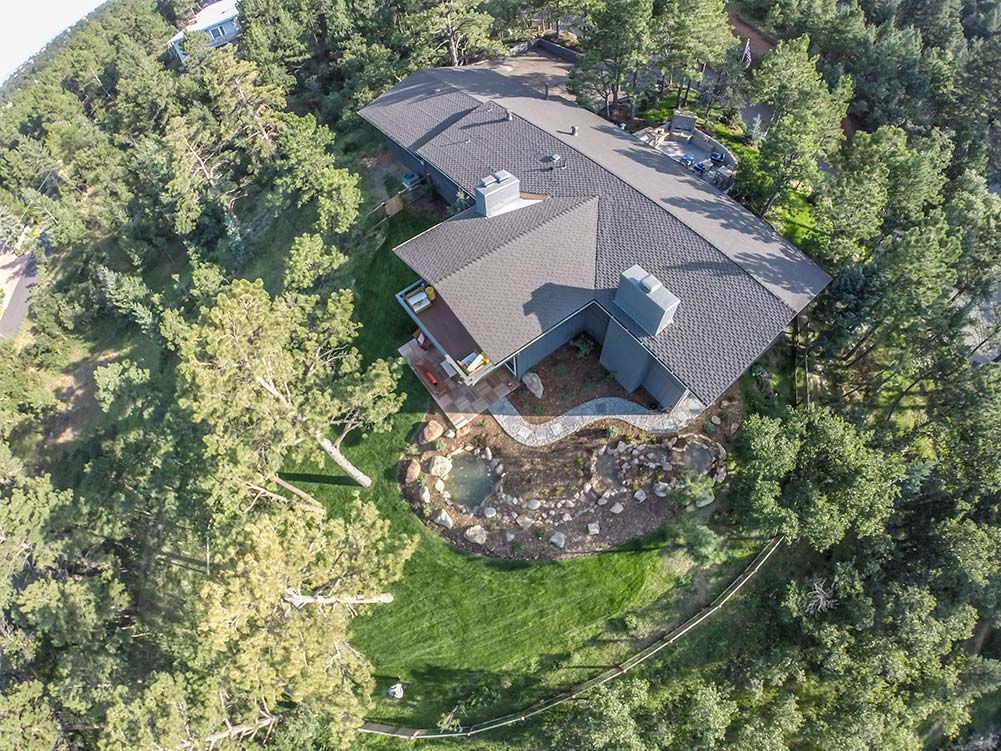Benefits of Evaluating Tree Health Before Construction
A good tree preservation plan can enrich lives for generations. Trees positively affect our curb appeal while enhancing a project's attractiveness, monetary value, marketability, and providing many ecological benefits. The benefits from one site to another may vary, but the recommendation to preserve is always encouraged when enhancing or starting a new project. Planning to protect our trees at the beginning of a project will:
- reduce long-term tree maintenance and replacement costs
- reduce site preparation costs
- reduce grading costs
- provide immediate aesthetic and economic benefits
The preservation of trees in development can be time-consuming, require good design and fees upfront. However, taking care of our trees upfront only enhances our spaces for the future.

Tree Preservation on New Construction Projects
New construction opportunities often clear an entire site of all vegetation. Arborists and Landscape Architects would recommend only removing trees in poor health or near the end of life. Before landscape projects begin, existing trees should be mapped, and their health should be evaluated. Tree evaluations can be done by your landscape designer when surveying the site. Tree health can vary, as well as disease and physical injury.
The growing season is the best time to evaluate trees and other plants for the most accurate information. When deciduous trees are dormant in the winter months, it can be hard to assess their condition. However, if an evaluation must be done during the winter, it is always important to evaluate.
When tree removal cannot be avoided, it should be done in the first phase of construction. Fencing off areas to protect trees throughout the landscape can be essential for tree survival and all vegetation. Trees that are removed after construction can ruin newly manicured landscapes or damage site grading.
Locating a Tree's Critical Root Zone to Avoid Future Damage
It is hard to determine the exact location of where a tree's roots lie. Tree roots are irregular, and growth is guided dependent on the conditions of the subsoil. Many use the 'dripline,' an area directly located under the tree branches' outer circumference, to establish a central circumference around the tree's root system.
When the tree canopy gets wet, any excess is shed to the ground along this dripline. To others, this is referred to as the tree's Critical Root Zone (CRZ), sometimes also called the Root Protection Zone (RPZ).
Though, the actual root zone is often two or more times the diameter of the dripline. Significant root damage decreases with distance from the trunk. When evaluating very old, very large, or shallow-rooted trees, it is essential to note that the protected area can increase 50 percent beyond the dripline.
Build with Great Care Under Trees
Construction in a tree's root zone should be done carefully. Great landscape designs often included curated spaces under the shade of a tree's canopy. The canopy can often provide the best shade for seating, patios, and other construction projects. These features create enjoyable spaces to entertain or relax but can often cause problems.
Construction projects near trees should avoid changes in drainage and permeability. Designs should also plan for handwork, set with relatively no foundation, and should be lightweight. Small equipment, including a lawn tractor, can compact the soil around roots or injure the tree. Traffic flow around trees should also be limited during construction. It is common to see materials stockpiled or equipment parked under trees. Excavated soil is a sure way to kill existing species or tree life.
Today's culture can be very careless towards the natural environment, especially when new construction is involved. Carelessness at the beginning of a project will only lead to problems and more expenses in the future. It's essential to hire experienced contractors and designers who take the extra care necessary to build around existing trees.

Grade Changes During Construction Projects
Appropriately applied mulch at the base of a tree can be critical to avoiding disease, pests, and rot. After planting, a 2 to 3-inch layer of mulch is recommended to be placed over the root zone. Mulch should never be placed against the trunk of the tree. Common signs for identifying unhealthy trees include small yellow leaves, the presence of numerous suckers along the main trunk and branches, many dead twigs, and in some instances, large dead limbs.
Trees take in oxygen through their roots, as well as water and nutrients. In the Critical Root Zone, substantial build-up or lower levels of soil can lead to the tree's death. 1 to 2 inches of soil removed will typically not affect a tree.
Steps should be taken to ensure that drought damage does not result from loss of roots or root cover. Landscape Architects will often remove no more than 6 inches of soil from the existing grade in the Critical Root Zone; however, this depends on the soils in which the tree is growing. On the other hand, if a tree's roots exist in the top foot of shallow soil, removing the top 6 inches would have a tremendous negative impact in that case.
There are many free resources to help guide the preservation and protection of our trees. Although, scheduling a consultation with a landscape designer before construction can give you peace of mind when moving forward with design planning. Accent Landscapes takes pride in recommending various strategies regarding the protection of your tree health and maintenance, methods for aerating the compacted soils, and mulching and irrigation practices to help prevent water stress.